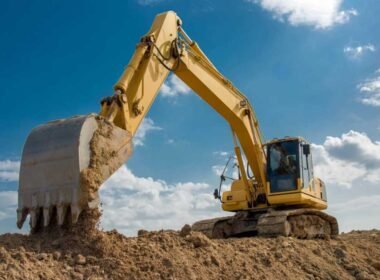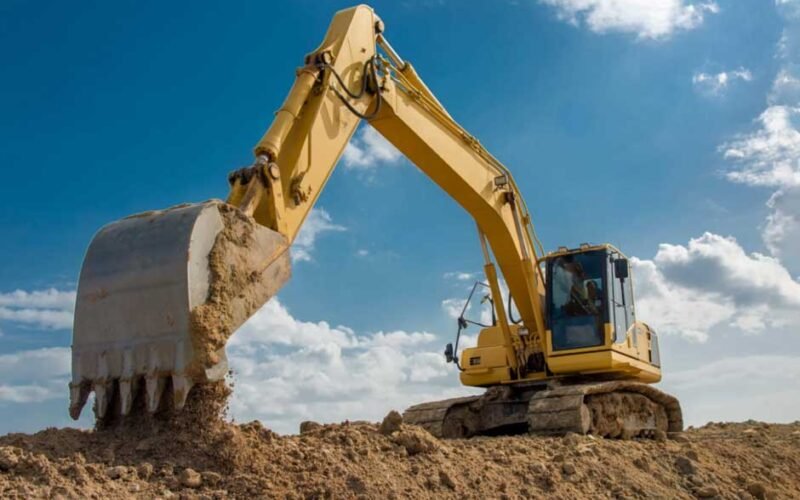In the field of heavy equipment, the words ‘digger’ and ‘excavator’ are frequently used interchangeably, yet these two words in strict significance manifest an obvious difference. Therefore, this matter may cause some newbies to feel puzzled. In order to help readers better distinguish their actual differences, this article will use plain, understandable language to explain to you the definition of the two, and let you accurately understand their meanings.
What is Digger?
Think of the term “digger” as a casual, informal nickname rather than a specific technical classification. It’s a broad, catch-all term that people use to refer to almost any piece of machinery designed to move earth. If its primary job is to dig a hole, trench, or foundation, someone on a job site will likely call it a digger.
Under this general umbrella, several different machines could be called a “digger,” including:
- Backhoe Loaders:These are versatile machines with a loader bucket on the front and a digging arm (or backhoe) on the back.
- Trenchers:These are specialized machines designed to dig narrow, precise trenches for pipes and cables.
- Mini Excavators:These are compact versions of their larger cousins, perfect for tight spaces.
- Excavators:Yes, even a true excavator is often called a digger.
So, the most important thing to remember is that “digger” is a general description of function, not a specific type of machine.
What is an Excavator?
An excavator, on the other hand, is a very specific class of heavy machinery with a distinct set of features. While it is certainly a type of digger, the term “excavator” refers to a machine with a particular design and powerful capabilities.
The defining characteristics of an excavator are:
- A 360-Degree Rotating House:The cab, engine, and boom assembly (collectively known as the “house”) are mounted on a rotating platform. This allows the operator to dig, swing, and dump material in a full circle without moving the machine’s base.
- A Boom, Stick, and Bucket:The primary digging arm consists of three parts: the boom (the section attached to the house), the stick (also called the dipper or arm), and the bucket. This three-part configuration provides immense reach and digging power.
- A Tracked Undercarriage:Most excavators run on tracks rather than wheels. This provides superior stability on uneven or soft ground and allows the machine to navigate challenging terrain.
An excavator is a heavy-duty earthmoving machine, engineered for large-scale projects like foundation digging, demolition, material handling, and mining.
The Differences Between Digger and Excavator
Now that we have the basic definitions, let’s break down the key differences in a head-to-head comparison.
Terminology: Slang vs. Technical
This is the core of the distinction.
- Digger:An informal, generic slang term for any machine that digs.
- Excavator:A formal, technical term for a specific machine with 360-degree rotation and a boom/stick/bucket setup.
The Golden Rule: All excavators are diggers, but not all diggers are excavators.
Functionality and Design: 360° Rotation is Key
The ability to rotate is the single biggest functional difference.
- Excavator:The 360-degree swing of the house makes it incredibly efficient. An operator can dig in front, swing 180 degrees to load a truck behind them, and then return to digging, all without moving the tracks.
- Other Diggers (like a Backhoe):A backhoe’s digging arm can only swing in a limited arc (typically 180-200 degrees). To work outside of this arc, the operator must reposition the entire vehicle, which is much less efficient for large-scale excavation.
Scope and Power: Heavy-Duty vs. General Purpose
Excavators are specialists built for power.
- Excavator:These machines are designed for heavy-duty, high-volume work. They can dig deeper, lift heavier loads, and move more material per hour than any other type of digger.
- Other Diggers:Machines like backhoes are more of a multi-tool. They can dig, but they can also load material with the front bucket and drive down the road. They are masters of versatility but cannot match the raw digging power of an excavator.
Versatility Through Attachments
While other diggers can use attachments, the modern excavator is a true multi-purpose tool platform.
- Excavator:The hydraulic system of an excavator is designed to power a huge range of attachments. An operator can swap out the bucket for a hydraulic hammer, an auger, a grapple, or a compaction plate. This versatility depends on having high-quality excavator parts and hydraulic systems that can handle the demand.
- Other Diggers:A backhoe’s versatility comes from having two different tools (a loader and a hoe) on one machine, but its ability to run a wide range of powerful hydraulic attachments is generally more limited than an excavator’s.
Key Differences TableChoosing the Right Machine for the Job
Understanding the difference helps you select the right equipment. Here are some simple scenarios:
You need a “Digger” (like a backhoe or trencher) when:
- You are doing utility work that requires digging a narrow trench and then backfilling it.
- Your project requires both digging and loading materials, and you want to use a single machine.
- You need to drive the machine between several job sites on public roads.
You need an “Excavator” when:
- You are digging a large, deep foundation for a building.
- You need to demolish a structure.
- You are loading high-sided dump trucks with large volumes of material.
- You are working on a steep slope or in soft ground where stability is critical.
Conclusion
If you want to completely distinguish clearly between a digger and an excavator, but just need to remember one core, that is, every excavator is a digger, yet not every digger is an excavator. In addition, you can then judge from the equipment flexibility, just remember that the features of excavators are that they can rotate 360 degrees. Using the correct terminology can ensure your transmission is more accurate, more importantly, is able to correctly and without mistake select spare parts when you are maintaining the equipment.









